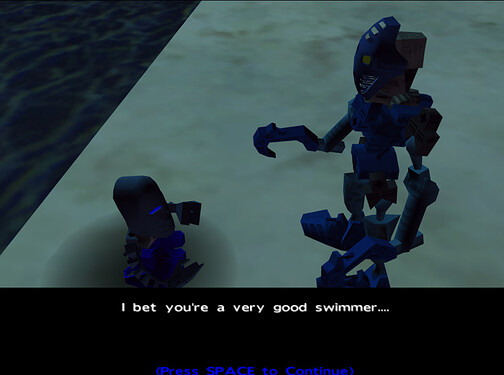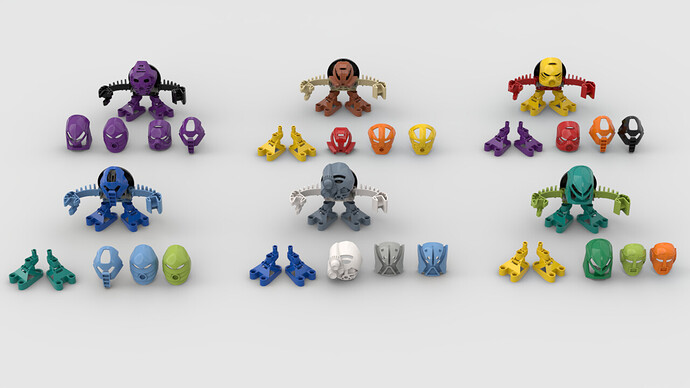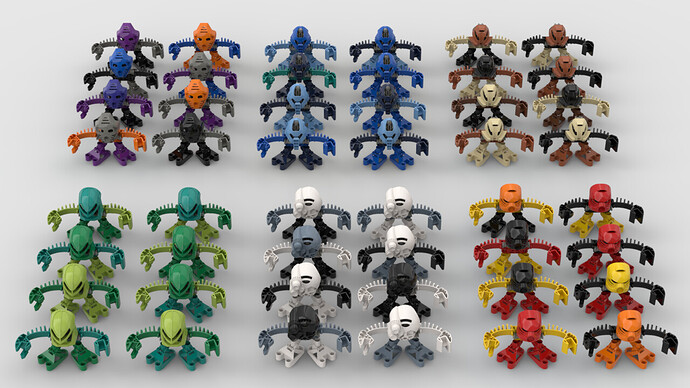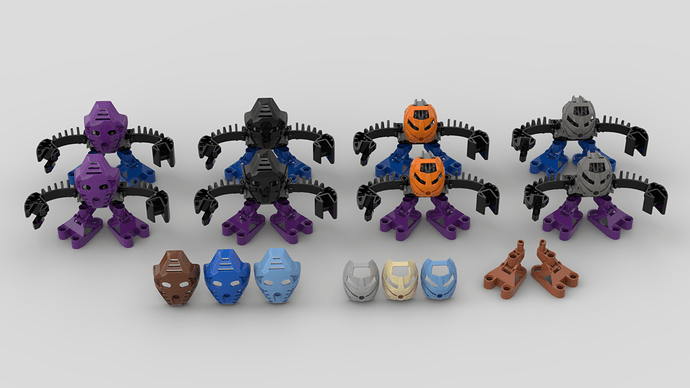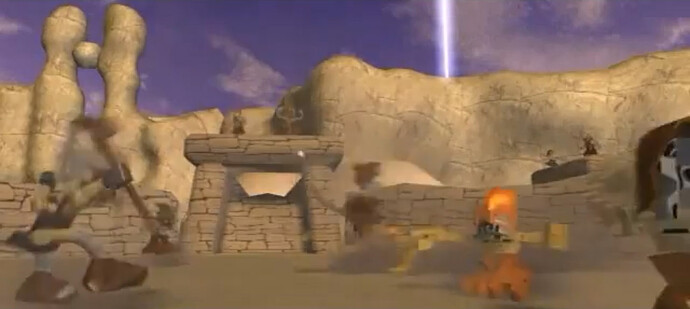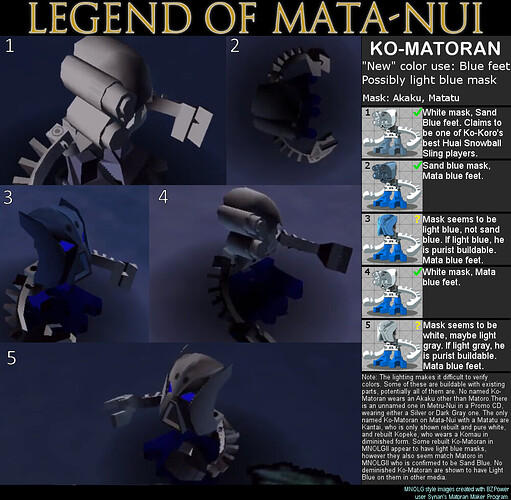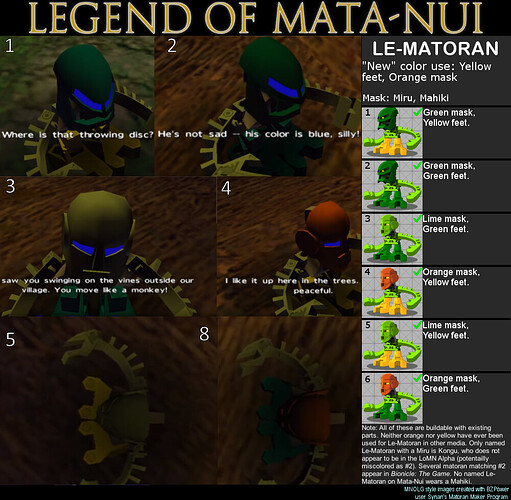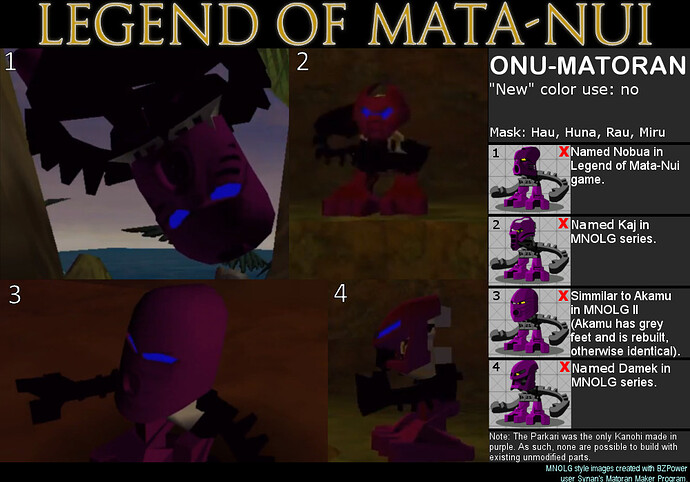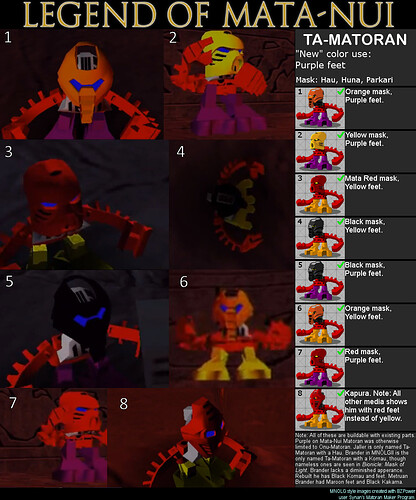In this topic I want to look at the colour schemes of Matoran, and how they’ve changed throughout the development of the game Legend of Mata Nui.
Looking at screenshots of the alpha, there are inconsistencies in colours that need to be addressed.
Compare the blues here:
And the greens here:
It’s subtle, but one of the Mirus is slightly more teal to match Kongu (Who isn’t pictured).
Going through the game these were my best interpretations:
As a side note, I’m not sure why brown is underused in the game. Even the Po-Matoran use brighter yellows and reds.
With the exception of Onu-Koro (which I’ll get back to), each village follows a clear pattern: One primary Matoran, an additional foot colour, and 3 additional masks matching the Matoran and Turaga of that village. In combination, there is a total of 8 unique Matoran per village (plus Kapura), which are repeated when necessary. The only one I didn’t see in the game was a Ga-Matoran with a lime Rau and teal legs.
Perhaps the developers were initially limited to existing parts, but if they were, why don’t the Onu Matoran follow this pattern? In both builds we’ve seen, they instead use Onepu’s purple and black, simply switching out the mask. Interestingly, this 5 Matoran found their way into MNOG, which was in development at the same time. (Though the one with the Rau was cut).
My guess is that they were in the middle of revamping the villages, and simply prioritized the first level, seeing as it’s the most complete. By the Beta build, they cut the villagers down to essentials: the primary greeter, and a few generic ones for fetch quests. If development had continued, maybe we would have seen more of the MNOG Matoran integrated, or maybe they would simply be mask swaps of the Mctoran. It’s hard to say.
There is one clue that suggests an earlier iteration of Onu-Matoran, and that’s the GBA game: Quest for the Toa, which was also developed by Saffire. As can be seen in Joint Dogg’s spritesheet, Onu Matoran had a wider range of colours, including blue and orange.
Based on this, here is what I speculate the Onu Matoran may have looked like earlier in development:
Strangely, a completely different set of colour schemes can be seen in the ending cutscene, with generic villagers using the primary and secondary colours of their respective Toa and Turaga. (Though the Ga-Matoran seem to use a darker blue to differientiate themselves from Macku.) Looking closely, even the Kaukau is represented among the Po-Matoran. Maybe they would have a villager for each mask? That would bring the number closer to the dozen seen in MNOG 2, though it could be a coincidence.
In short, LOMN seems to use 3 distinct colour patterns: one using existing parts, one closer to MNOG with mask swapped Mctoran, and a third with generic villagers matching their respective Toa’s colours.
